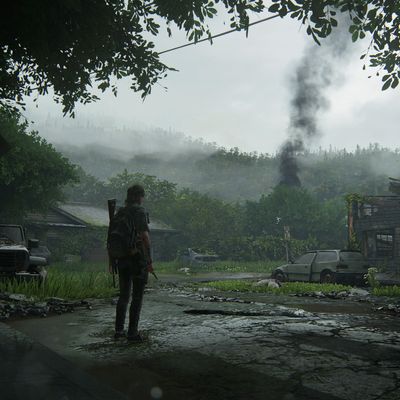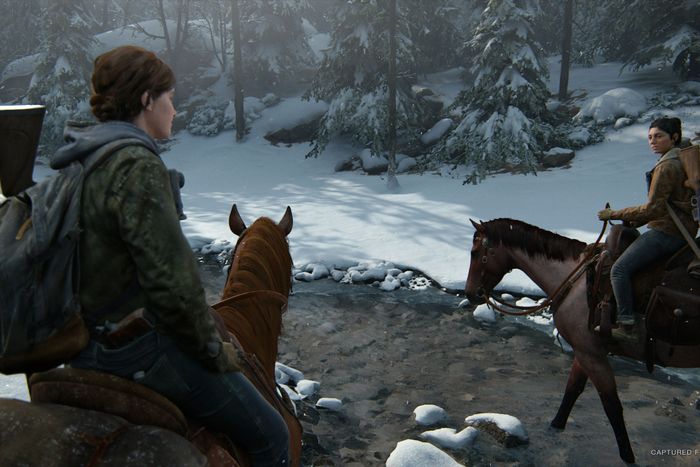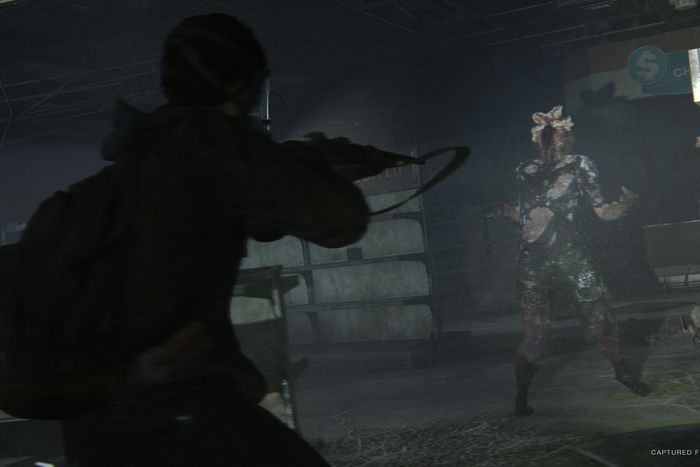
“The biggest tip I can give you is that running away is a valid strategy.”
You know you’re in for a trip when that’s the last thing a game’s director — in this case Neil Druckmann, from the developer Naughty Dog — says before you begin a demo.
Earlier this week in Los Angeles I was among a small cohort of journalists who got a chance to play the much-anticipated The Last of Us Part II, which is set for release on February 21, 2020. This was an opportunity none of us took lightly: If you get a bunch of gamers together and tee up the question of the best game of all time, it won’t be long before someone mentions The Last of Us. More than six years after its release, it’s still regarded as a benchmark for storytelling in a medium where narrative is rarely appreciated.
Which is why it’s so bold, and interesting, that developer Naughty Dog is risking that unimpeachable legacy with a long-gestating sequel. The Last of Us series is set in a post-apocalyptic world in which the human race has been ravaged by a fungus that turns people into brainless monsters, leaving the human survivors squabbling over the limited resources that remain. The first game put players in control of Joel, who was tasked with protecting Ellie, an adolescent girl who was mysteriously immune to the virus, on a trip across the decimated United States. The game ended with Joel essentially dooming the rest of the human race to save Ellie, who had morphed into a surrogate daughter over the course of the narrative.
The story of The Last of Us Part II begins five years later, with 19-year-old Ellie as the protagonist (and with Joel, as implied by the end of the trailer that dropped this week, apparently shifting into a supporting role). According to Druckmann, The Last of Us Part II is Naughty Dog’s biggest game ever in terms of scope, ambition, and length. I can’t speak to scope or length yet, but I can vouch for ambition. The Last of Us Part II demo was divided into two parts, showcasing a pair of disconnected (and very different) moments from the game.
The first part took place in the snowy perimeter of Jackson, Wyoming, which has become a relatively safe haven for a group of like-minded survivors. It begins with Ellie on patrol with her friend-or-maybe-more-than-a-friend Dina — who was seen in The Last of Us Part II’s 2018 E3 trailer — in what’s essentially a tutorial. Ellie and Dina ride horses around the Jackson perimeter, scrounging for supplies and dispatching the occasional infected human. The enemies here are either “Runners” or “Clickers,” which will both be familiar to Last of Us veterans. The Wyoming slice of Part II was prettier than the Playstation 3’s already-striking The Last of Us or its bestselling Playstation 4 remaster, but mechanically, it was more or less identical. (There are a few new player actions: designated buttons for jumping and dodging, and Ellie can shift from crouching to lying prone on the ground, which slows her movement but makes her harder to spot.)
This segment of the game was enjoyable (and beautifully acted by returning star Ashley Johnson and newcomer Shannon Woodward), with an overall vibe similar to the Last of Us downloadable prequel chapter Left Behind, in which the player controlled Ellie as she explored an abandoned mall with her friend Riley: Exploration cut with flirtatious banter that culminates in a cathartic kiss. It was also immediately recognizable as a Naughty Dog product. The developer has gained a devoted following via a broadly recognizable house style: A carefully calibrated mix of story, combat, exploration, and some light platforming, with a too-helpful waypoint appearing if you dawdle in any one place for more than a couple of minutes. That’s what I expected from a Last of Us sequel, which made me wonder if the new game might suffer for feeling too familiar.
So it was the latter half of the demo, which takes place “much later” in the overarching narrative of the game, that really piqued my interest.
At that point in the story, Ellie is in Seattle. The city has been taken over by an armed gang called the W.L.F., who Druckmann describes as “a xenophobic group that executes trespassers on sight.” This time, Ellie is alone, cautiously slinking through a neighborhood packed with at least a dozen gun-toting human adversaries. In an unnerving touch that bucks the longstanding video game trend of waves of faceless enemies, the baddies in Part II each have a unique name; you may never find out their whole backstory, but it’s still disturbing to hear someone loudly mourning the death of a friend you disemboweled just a minute earlier.
It’s here that Part II cleverly uses gamers’ habits from the first Last of Us against them. If you, like me, were a compulsive explorer and hoarder, the Seattle sequence will make you pay for it. My insistence on exploring every nook and cranny of the area led to some useful items — but it also entangled me in several tricky optional encounters. Once, I acted like every idiot I’ve ever mocked in a horror movie by moving a dumpster someone had used to block a door, which led to a host of feral Runners bursting out and swarming me. Another time, I fell through the floor in an abandoned building and came face-to-face with a couple of Shamblers, which are a new type of infected human.
As lead game designer Emilia Schatz later explained to me, Shamblers were introduced to fill “this void, or gap, in our Infected.” When a Shambler gets close to Ellie, it unleashes a cloud of poisonous gas, which negates the tried-and-true Last of Us strategy of sneaking up behind something and stabbing it for a one-hit kill. Shamblers also have heavy armor; in my experience, not even a Molotov cocktail was enough to take one down without a couple of follow-up bullets. The point of the new enemy, Schatz says, is to “force the player to move around, and to create more challenge by shrinking the environment as you play it.” In my initial, panicky experience, the Shamblers mainly succeeded in getting me to fire off way too many rounds from my always-scarce supply of bullets.
The game always demands players to be thinking on their feet and adjusting approach when something goes wrong, and each of these enemies can be tough and complicated to defeat on its own. But when you take, say, a room full of Shamblers and Runners — which have vastly different strengths and weaknesses — the dangers become exponentially greater. But then, so are the opportunities for strategy. It didn’t come up in the demo, but Schatz confirmed to me that Part II will feature scenes in which both humans and Infected enemies will be in the same area, allowing you to manipulate them into attacking each other — a feature that wasn’t included in the original Last of Us until the Left Behind DLC.
In short: While opportunities for creative killing are plentiful, this game is hard — several degrees harder than anything I can remember from The Last of Us. Throughout the sprawling, multi-level environment of the Seattle sequence, Ellie is vastly outnumbered and outgunned. Part II has a knack for making you feel just safe enough to put down your gun and patch up an injury before an enemy stomps in through a back door you hadn’t noticed.
And I haven’t talked about the dogs yet.
In Part II, W.L.F. members have trained dogs they use to hunt you down, and boy, are they a problem. Dogs, unlike humans, can smell Ellie. If they pick up your trail, all the tall grass in the world can’t hide you. A barking dog will alert all the humans in the area to your presence. It will also bite your face off.
I died at least six times in the Seattle sequence. Sometimes it was thrilling, sometimes it was frustrating; always it was because I got too panicky or too cocky and I screwed something up. Ellie carries a small arsenal of weapons as sophisticated as a pipe bomb and as crude as a brick, but it wasn’t until the end of the demo that I really got the hang of the full tool set. As two enemies climbed over a nearby fence, muttering darkly about finding the invader in the area, I crouched about 20 feet away. Just as the second enemy hit the ground, I launched a silent attack at her head, killing her instantly. Her oblivious partner kept marching forward, giving me a chance to crawl up behind and gut her with my knife just as she turned to discover why her chatty friend had gone quiet. As I scurried away into the bushes, another enemy and his dog noticed movement and started walking in my direction. I waited until they were close, tossed a brick that made them both turn in the opposite direction, and raced up behind, killing both the man and the dog with a couple of bursts from my revolver.
It was the kind of nervy thrill The Last of Us is uniquely equipped to deliver: The terror of being the vulnerable prey, and the surge of adrenaline that comes when you flip the odds and become the vicious predator. In the end, that’s why this Last of Us Part II demo was divided into two portions: One where you controlled Ellie at her most vulnerable and human, and one where you controlled her at her most violent and feral. The goal of the game, says Schatz, is to remind players that “all of that can be a part of one person.” And as for who gets to survive — or, for that matter, who deserves to survive — in a world of so much ruthlessness and bloodshed? “It comes down to who gets lucky, sometimes.”



